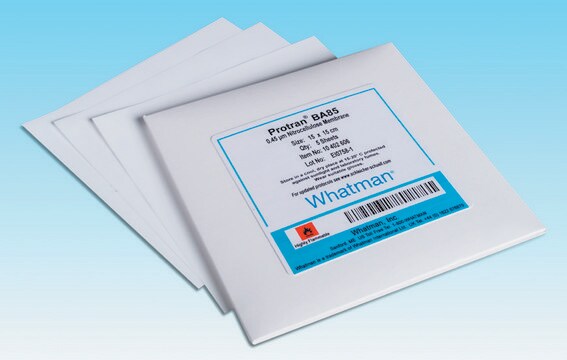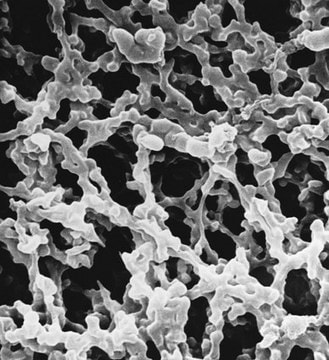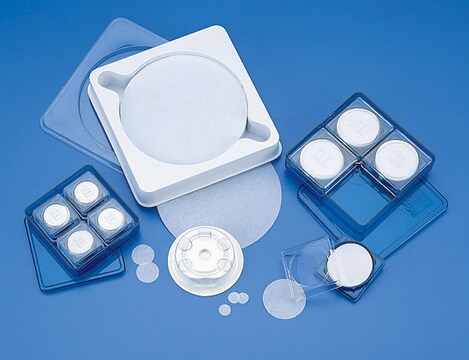WHA10402012
Whatman® nitrocellulose NC10 filter discs 0.1 μm pore size
white, hydrophilic, 100 ea, 47 mm diam
Synonym(s):
Whatman filter, Z697370, cellulose membrane, membrane filter
About This Item
Recommended Products
Product Name
Whatman® nitrocellulose membrane filters, NC10 Membrane Circles, diam. 47 mm, pore size 0.1 μm
sterility
non-sterile
manufacturer/tradename
Whatman 10402012
Whatman Article No. 28415055 (US reference)
packaging
pkg of
diam.
47 mm
pore size
0.1 μm
Looking for similar products? Visit Product Comparison Guide
Features and Benefits
- Standard membrane filter for most applications involving particles and cells from 0.1 µm to 12.0 µm
- Samples are retained on the surface for easy microscopic analysis and recovery
- Temperature-resistant cellulose nitrate can withstand autoclaving up to 121°C with no loss in integrity
- Whatman membrane filters exhibit a low shrinkage during autoclaving, reducing tearing
- High strength and flexibility prevent tearing during handling, loading, and autoclaving
Other Notes
Legal Information
Signal Word
Warning
Hazard Statements
Precautionary Statements
Storage Class Code
11 - Combustible Solids
Choose from one of the most recent versions:
Certificates of Analysis (COA)
It looks like we've run into a problem, but you can still download Certificates of Analysis from our Documents section.
If you need assistance, please contact Customer Support.
Already Own This Product?
Find documentation for the products that you have recently purchased in the Document Library.
Our team of scientists has experience in all areas of research including Life Science, Material Science, Chemical Synthesis, Chromatography, Analytical and many others.
Contact Technical Service




